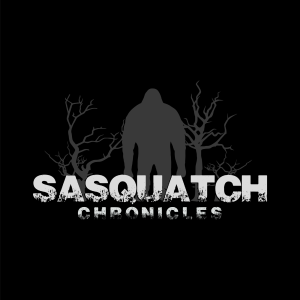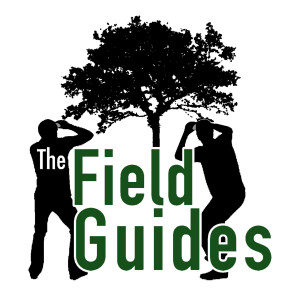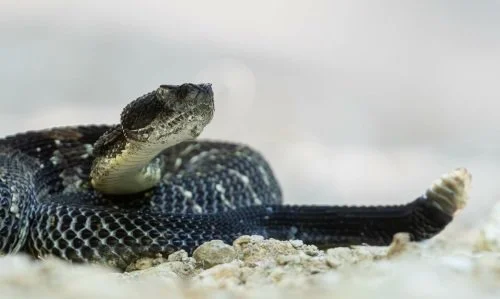Love ‘em or hate ‘em, we wager you’ll enjoy this dive into the shiny (not slimy) world of rattlesnakes. This episode, the guys take a close look (but not too close) at the Timber Rattlesnake (Crotalus horridus), trying to show how it’s not out to kill you and also finding out how it ended up on the “Don’t Tread On Me” flag. Plus, they introduce the newest field guide, Daniel!
The episode was recorded on December 7, 2023 at Hunters Creek County Park in East Aurora, NY.
Episode Notes
One intriguing question that came up was, “If rattlesnakes that rattle call attention to themselves and get killed by humans, does this mean we’re inadvertently selecting for rattlesnakes that don’t rattle and creating populations of silent rattlers?” It’s an idea that sounds logical, but, as the guys have discovered on many other occasions, that doesn’t mean it’s true. After some digging through a variety of sources, the guys could find zero research-based evidence supporting the idea of this phenomenon. There are news stories that promote it, but all the ones that do seem to base their info on anecdotal accounts. The most interesting source - and the one the guys found to be the most skeptical (in the best sense of the word) - was from Rattlesnake Solutions LLC, an Arizona-based rattlesnake removal and consulting service. This is ironic because Bill went out of his way during the episode to caution listeners to be wary of such sites, but this one seems to genuinely want to not only share solid info about rattlesnakes but also to combat misinformation. In a post called, “Are rattlesnakes evolving to rattle less, or losing their rattles?”, they explained:
Rattlesnakes don’t often rattle in the wild, even when there’s someone looking at them. This is a great example of confirmation bias. If you hear that rattlesnakes aren’t rattling any longer, and you then see a rattlesnake just sitting there and not rattling, this can serve as confirmation that the rumors are true. You then tell others this is the case, having first-hand experience on the matter, comment on Facebook, etc. Just like that, you’ve become the latest node in the spread of nonsense without realizing it.
This can be even more confusing for long-term hikers with a lot of experience, who report seeing this phenomenon over time (decades even), where rattlesnakes used to rattle but now most of the rattlesnakes they see don’t: therefore the myth is true. What these anecdotes really look like is something much more simple to explain. Over the years, these people have simply become better at seeing rattlesnakes, and peaceful sightings of rattlesnakes just sitting silent, as they usually do, become more frequent.
Check out their full post for more information.
Do any snake species have eyelids? As far as we could find, no. Instead, snakes have a brille; a transparent, disc-shaped, immobile scale that covers the eye.
Is Pennsylvania one of the “biggest hunting states”? During the episode, Steve asked if he was right thinking that Pennsylvania was one of the biggest hunting states, and Bill confirmed it, pretending that he had some knowledge of whether this was true or not. He looked into it after recording and found this listing of states, ranked according to the number of hunters. Turns out Pennsylvania is #23 (Wyoming is number 1), so Bill was just straight-up wrong.
At what point does inactivity cross the line and become brumation? This was a question to which we could not find a definitive answer. From reading several articles, the best explanation the guys could cobble together was that brumation is typically long-term, seasonal, and is something animals prepare for by eating more food, while inactivity is short-term and sporadic. But take that last sentence with a grain of salt; like with hibernation, brumation seems to occur on a spectrum that can vary with species and conditions. More info here.
Does the Timber Rattlesnake breeding season differ from north to south? The guys could find no definitive answer for this either, but by looking at descriptions of Timber Rattlesnake breeding seasons state-by-state, they did notice differences. For example, in their home state of NY, it was noted that Timbers breed from early summer (June/July) to early autumn (Sept/Oct), while the National Forest Service listed the Timber’s breeding season in Florida as August through October. So, there appears to be a later start to the breeding season further south, and the breeding season appears shorter there, as well.
Are sharks viviparous or ovoviviparous? Turns out that sharks are similar to snakes in that some lay eggs (oviparous), some give birth to live young (viviparous), and some have eggs that hatch in the body (ovoviviparous). And, just to make it more complicated, there are some records of sharks reproducing asexually.
Finally, Daniel wondered what happens to the eggs in ovoviviparous animals (the ones who have eggs hatching inside their bodies). Are the eggshells expelled, absorbed, or what? This was a question the guys could not find an answer to, so if any listeners out there can help them out, please get in touch!
Please comment below if you notice any mistakes or unanswered questions in the episode.
Episode Links
Wild Snake Education and Discussion Group’s article about Timber Rattlesnakes
And here’s a link to their Facebook group, too.
Mary Holland’s blog post on vivipary, ovipary, and ovovivipary, and a second site that provided more in-depth info: Everyone's Talking About....Ovoviviparity, Oviparity, and Viviparity
Check out the National Park Service’s handy-dandy breakdown of snake dentition
Timber Rattlesnakes are intertwined with US history. Look into the Timber Rattlesnake and it’s connections to Ben Franklin and the American Revolution
Sponsors and Ways to Support Us
Gumleaf Boots, USA (free shipping for patrons)
Thank you to Always Wandering Art (Website and Etsy Shop) for providing the artwork for many of our episodes (including for part 2 of this episode)!
Support us on Patreon!
Check out the Field Guides merch at our Teespring store. It’s really a great deal: you get to pay us to turn your body into a billboard for the podcast!
References / Works Cited
Adamski, Jonathan (2020) Viperid Spotlight: Timber Rattlesnake (Crotalus horridus). Available at: https://wsed.org/viperid-spotlight-timber-rattlesnake-crotalus-horridus/ (Accessed: 10-20-23).
Brown, W.S., 2016. Lifetime reproduction in a northern metapopulation of timber rattlesnakes (Crotalus horridus). Herpetologica, 72(4), pp.331-342.
Mancini, Mark (2021) The Highly Venomous Timber Rattlesnake Is an American Icon. Available at: https://animals.howstuffworks.com/snakes/timber-rattlesnake.htm (Accessed: 9-20-23)
Reinert, H.K. and Rupert Jr, R.R., 1999. Impacts of translocation on behavior and survival of timber rattlesnakes, Crotalus horridus. Journal of Herpetology, pp.45-61.
Wynns, Samantha (2018) Cabrillo Field Notes: Fang-tastic Friends. Available at: https://www.nps.gov/cabr/blogs/fang-tastic-friends.htm#:~:text=Solenoglyphous%20snakes%20are%20snakes%20with,much%20like%20a%20hypodermic%20needle (Accessed: 9-20-23).
Create your
podcast in
minutes
- Full-featured podcast site
- Unlimited storage and bandwidth
- Comprehensive podcast stats
- Distribute to Apple Podcasts, Spotify, and more
- Make money with your podcast
It is Free
You may also like

Sasquatch Chronicles


Radiolab


The Confessionals


DarkHorse Podcast


Sasquatch Odyssey


- Privacy Policy
- Cookie Policy
- Terms of Use
- Consent Preferences
- Copyright © 2015-2024 Podbean.com




 iOS
iOS Android
Android